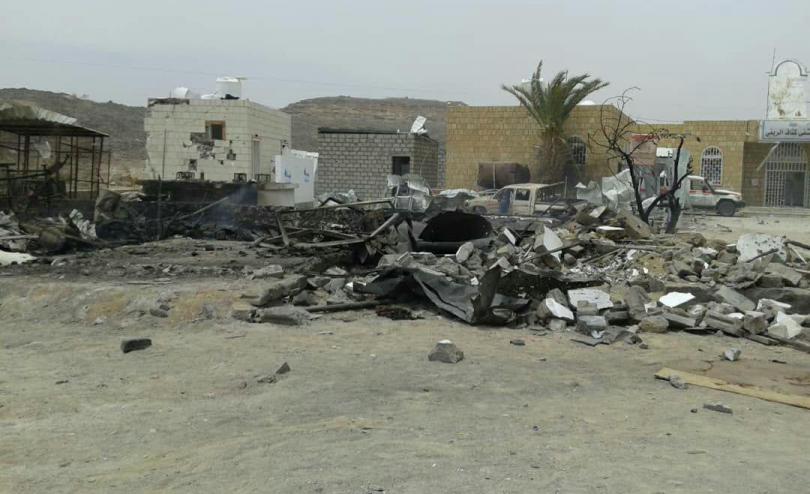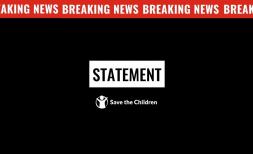Yemen cholera outbreak: 100,000 children infected since start of 2019

Sana’a, Yemen, 25 April 2019 – More than 100,000 suspected cases of cholera have been reported among children under the age of 15 in Yemen since the start of the year - more than twice the number during the same period in 2018.
Children account for close to half (45%) of all the new cases. Altogether there were 236,550 cases of suspected cholera between 1st January and 19th April 2019. Of these, 105,384 were in children under 15. Almost half these cases were recorded in the last month alone - nine times as many as in the same time period last year.
Save the Children is warning that recent heavy rains, flash floods, fuel shortages and ongoing fighting despite the first steps towards a peace process in Stockholm last December, are adding to the chaos of four years of war to create perfect conditions for cholera to spread faster and further in the coming months.
Fuel shortages and a spike in fuel prices are limiting the pumping of sewage, clean water supply and garbage collection. Many families have been unable to take their children to health facilities because they cannot afford the soaring cost of transport. Many people rely on buying clean water from trucks, but with the rising fuel prices the cost is increasing, forcing some people to turn to dirty water sources.
Save the Children has warned that in places where fighting is continuing, the numbers could increase dramatically. It is feared that in Hajjah, in the northwest of the country, fighting could cut access to the only water source for 200,000 people who are already vulnerable to the disease because many have been displaced by conflict and face high levels of food insecurity.
After an outbreak infected more than 1 million people in 2017, the disease was partially contained during 2018.
In February the international community pledged $2.6 billion to the response to the war in Yemen - 65% of the money needed to meet humanitarian needs across the country.
Yet two months later, those pledges have largely failed to materialise. Only 4% of the funds needed for the health response have made it to agencies on the ground. For water, sanitation and hygiene, which will also be crucial in combating the spread of the disease, the figure is 10%.
Tamer Kirolos, Save the Children’s Country Director in Yemen, said:
“Cholera is once again raging in many parts of the country, threatening children and families already brutalised by years of conflict: 100,000 children have been infected in less than four months of 2019.
“This surge is yet more evidence that while the war rages there will be no end to the suffering of Yemen’s children. Gains made against the disease in 2018 have unravelled in the face of relentless violence. Yet more people have been forced to flee their homes. Hunger and malnutrition are rampant. Vital health and sanitation services have been debilitated.
“And yet millions of pounds that were promised are failing to reach those who need it. The international community must disburse these funds faster so we can scale up to treat and contain the disease.
“But only when all parties come together to find a peaceful solution and end the war will children be safe from cholera for good. The progress made at Stockholm cannot be allowed to stall while so many lives hang in the balance.
“All parties should implement the Stockholm Agreement in good faith and return to the negotiating table to agree to a nationwide ceasefire and political settlement to finally end the conflict.”
Without treatment, cholera can kill within hours. Malnourished children have substantially reduced immune systems and are at least three times more likely to die if they contract cholera. Diarrhoeal diseases like cholera are also themselves a major cause of malnutrition.
Two million children under the age of five will need treatment for acute malnutrition this year, according to the United Nations.
Notes to editors
All figures from analysis of the World Health Organisation’s Yemen cholera dashboard. Recent outbreak figures in detail:
From 1st January – 19th April 2019 there were 236,550 cases of suspected cholera, including 105,384 children under the age of 15
From 1st January – 19th April 2018 there were 69,496 cases of suspected cholera, including 39,748 children under the age of 15
From 20th March – 19th April 2019 there were 116,020 suspected cases, of which 47,684 were children
From 20th March – 19th April 2018 there were 9,076 suspected cases, of which 5,127 were children
- Save the Children is currently responding to the cholera outbreak in 7 locations in Yemen. The aid agency is providing treatment in diarrheal treatment centers and basic first aid for acute watery diarrheal cases. At community level, Save the Children is training volunteers on cholera messaging to help children and families stay safe, and distributing hygiene kits.
- Save the Children has previously estimated 85,000 children under the age of five may have died from extreme hunger and disease since the conflict escalated on March 26, 2015.
- The UK is the ‘penholder’ on Yemen at the UN Security Council. That means that the UK has the power to draft and table Security Council products on Yemen – including press statements, resolutions, and presidential statements. It means they have the power to lead the way in efforts to forge a political, not military, solution to the conflict.
- In February donors pledged $2.62 billion to the 2019 humanitarian response in Yemen. Funding progress can be followed on the humanitarian financial tracking service.
- Malnourished children are 6.3x (Severe Acute Malnutrition) and 2.9x (Moderate Acute Malnutrition) more likely to die from diarrhoeal diseases than well-nourished children. See here for more information: http://www.who.int/nutrition/topics/Lancetseries_Undernutrition1.pdf




